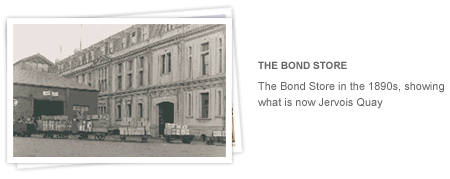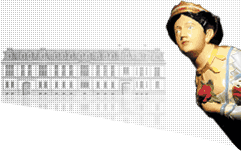

The Museum of Wellington City & Sea is located in The Bond Store - a category one heritage building located at the heart of Wellington's waterfront.
80 years of duty
Designed by leading architect Frederick de Jersey Clere, The Bond Store began life in 1892 as a cargo warehouse on Wellington?s waterfront. It was a holding warehouse for goods that required the payment of customs duty before they could be released to the importer. The head office of the Wellington Harbour Board, a vital centre of power for early Wellington, was located in opulent offices upstairs.

changing times
New methods of cargo handling - containerisation and roll-on/roll-off ferries - introduced in the 1960s changed the face of the shipping sector and Wellington's wharf. Reclaimation was carried out on both sides of Queens Wharf and a container terminal created at Thorndon. By the mid 1970s The Bond Store was nolonger at the centre of activity on the wharf.
Maritime history
By the 1970s The Bond Store was a rabbit warren of mostly empty offices. Then the Harbour Board had a timely suggestion: to convert it into a small museum to house its collection of artifacts detailing the story of Wellington harbour and maritime history.
The Wellington Harbour Board Maritime Museum was opened in 1972 and was a resounding success. When the Harbour Board wound-up in 1989 most of the building became gallery space.
stories of wellington's harbour, city & people
Throughout the '90s the capital experienced a cultural renaissance and there was a surge of civic pride. With the opening of the new National Museum of New Zealand Te Papa Tongarewa it was the perfect time to expand the Museum?s focus to include the riches of Wellington?s social and cultural history.
On 27 November 1999, the Museum re-opened with a new name and a new purpose. It was now the Museum of Wellington City & Sea with a mission to preserve, promote and present Wellington?s heritage - social, cultural and maritime.
Time in a bottle
Two time capsules are hidden inside the Bond Store. One was placed in the building?s foundations in 1891. A second was added 100 years later as the Harbour Board marked its centenary.






